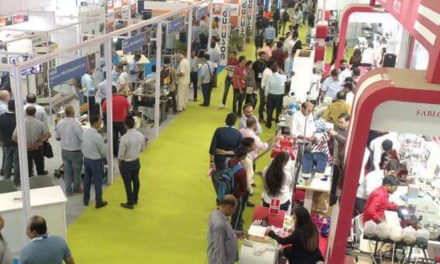
India’s apparel exports has shown a decline of 39 per cent (in US$ terms) for the month of October’17. There has been an overall decline of 5.94 per cent in the exports of apparels from India as per the data released recently. AEPC has indicated earlier about the decline in exports in the coming days on account of the issues which have arose after the implementation of GST.
In the wake of dwindling apparel exports, AEPC has been engaging with the policy makers for an early resolution of the issue which is hampering the apparel industry, post GST roll out. It has already made several presentations to the Ministry of textile, Drawback Committee, NITI Aaayog, Parliamentary Standing Committee etc. As part of its outreach strategy, an AEPC delegation led by its Chairman Ashok Rajani met Chief Economic Advisor (CEA), Dr. Arvind Subramanian recently to express concern on the decline of exports, post GST rollout. In his meeting with the Chief Economic advisor, Rajani informed him that for the period of Jul-Oct, overall exports have declined by 6 per cent which is mainly on the account of sharp reductions in the effective drawback rate and RoSL rate and has not only reduced the total reimbursements of duties for the sector but has also affected the export prospects of the apparel sector drastically.
Talking about his meeting with the CEA, Dr. Arvind Subramanian, Ashok Rajani Chairman, AEPC said, “For the period of Jul-Oct, there has been a drastic decline of 5.94 per cent in the overall exports of apparels from India. The apparel export industry has been severely handicapped by the sharp reductions in the effective drawback and RoSL rates. The drawback mechanism prior to the GST reimbursed both the customs duties and domestic taxes like central excise and service tax but after the implementation of the GST, the drawback rates are now only reimbursing the customs duties and for other duties the argument that is advanced is that those duties would be available as part of the credit chain”.
“The important point is the principle of reimbursement of domestic non-GST and GST central taxes in addition to customs through the drawback mechanism. This requires an amendment in the drawback rules to provide for reimbursement of GST duties. We therefore urged Dr. Subramanian that pending these legislative changes, the total duty reimbursements to the apparel sector be retained at pre-GST stage of 7.5 per cent drawback without input tax credits, plus 3.5 per cent of RoSL. These pre-existing levels of reimbursement through the drawback and the RoSL routes may be maintained upto 31 March, 2018 to provide immediate relief to the reeling apparel sector”, informed Rajani.
In its meeting with the CEA, AEPC delegation informed him about the recommendation of the Drawback Committee for a composite rate for apparel sector without GST credits as an option. The AEPC delegation requested the CEA for an early expedition of the issue of composite rate for apparel sector as the move will benefit a large number of small scale exporters.Earlier, in its presentation to the Parliamentary Standing Committee, AEPC has asked for the extension of exemption of IGST on import under EPCG or Advance Authorization from 31st March, 2018 to December, 2018 to provide a longer window for investment decisions.





















